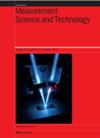Enhanced Curve-Based Segmentation Method for Point Clouds of Curved and Irregular Structures
IF 3.4
3区 工程技术
Q1 ENGINEERING, MULTIDISCIPLINARY
引用次数: 0
Abstract
This paper proposes an improved method for model-based segmentation of curved and irregular mounded structures in 3D measurements. The proposed method divides the point cloud data into several levels according to the reasonable width calculated from the density of points, and then fits a curve model with 2D points to each level separately. The classification results of specific types are merged to obtain specific structural measurement data in 3D space. Experiments were conducted on the proposed method using the region growth algorithm (SRG) and the model-based segmentation method (MS) provided in the PCL library as the control group. The results show that the proposed method achieves higher accuracy with a mean intersection merge ratio (MloU) of more than 0.8238, which is at least 37.92% higher than SRG and MS. The proposed method is also faster with a time-consuming only 1/5 of SRG and 1/2 of MS. Therefore, the proposed method is an effective and efficient way to segment the measurement data of curved and irregular mounded structures in 3D measurements. The method proposed in this paper has also applied in the practical robotic grinding task, the root mean square error of the grinding amount is less than 2 mm, and good grinding results are achieved.grinding results are achieved.基于曲线的曲面和不规则结构点云增强型分割方法
本文提出了一种基于模型的改进方法,用于在三维测量中对曲线和不规则土墩结构进行分割。该方法根据点的密度计算出的合理宽度,将点云数据划分为多个层次,然后分别对每个层次拟合出具有二维点的曲线模型。合并特定类型的分类结果,即可获得三维空间中的特定结构测量数据。以 PCL 库中提供的区域增长算法(SRG)和基于模型的分割方法(MS)为对照组,对提出的方法进行了实验。结果表明,提出的方法实现了更高的精确度,平均交叉合并比(MloU)超过 0.8238,比 SRG 和 MS 至少高出 37.92%。同时,所提方法耗时仅为 SRG 的 1/5、MS 的 1/2,速度更快。因此,本文提出的方法是在三维测量中分割曲面和不规则土墩结构测量数据的一种有效且高效的方法。本文提出的方法还应用于实际的机器人打磨任务中,打磨量的均方根误差小于 2 毫米,并取得了良好的打磨效果。
本文章由计算机程序翻译,如有差异,请以英文原文为准。
求助全文
约1分钟内获得全文
求助全文
来源期刊

Measurement Science and Technology
工程技术-工程:综合
CiteScore
4.30
自引率
16.70%
发文量
656
审稿时长
4.9 months
期刊介绍:
Measurement Science and Technology publishes articles on new measurement techniques and associated instrumentation. Papers that describe experiments must represent an advance in measurement science or measurement technique rather than the application of established experimental technique. Bearing in mind the multidisciplinary nature of the journal, authors must provide an introduction to their work that makes clear the novelty, significance, broader relevance of their work in a measurement context and relevance to the readership of Measurement Science and Technology. All submitted articles should contain consideration of the uncertainty, precision and/or accuracy of the measurements presented.
Subject coverage includes the theory, practice and application of measurement in physics, chemistry, engineering and the environmental and life sciences from inception to commercial exploitation. Publications in the journal should emphasize the novelty of reported methods, characterize them and demonstrate their performance using examples or applications.
 求助内容:
求助内容: 应助结果提醒方式:
应助结果提醒方式:


